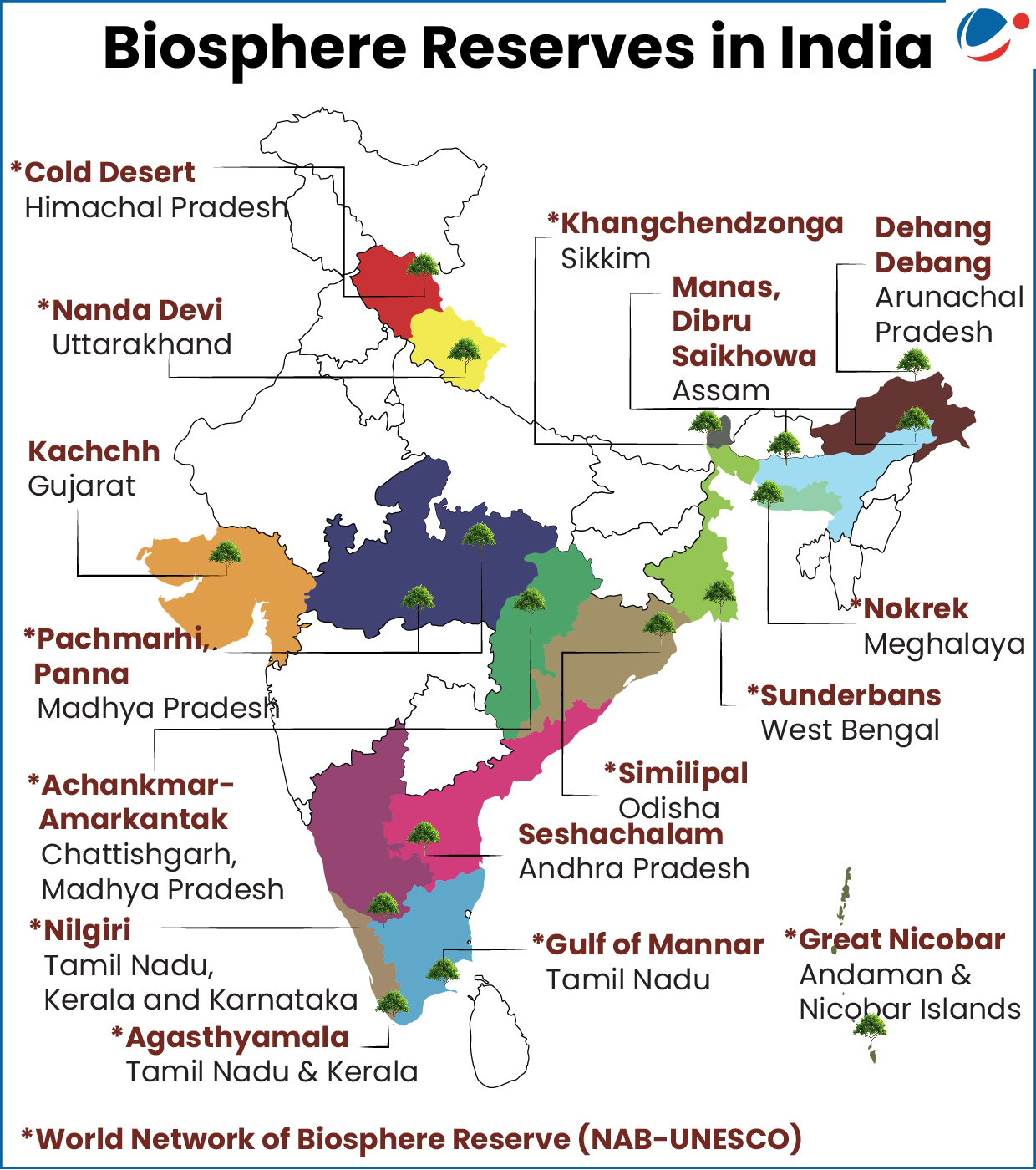Why in the news?
UNESCO designated the Cold Desert Biosphere Reserve in India – as part of 26 new sites – to UNESCO's World Network of Biosphere Reserves (WNBR).

More in the news
- This designation brings India's total to 13 UNESCO Biosphere Reserves, joining a global network of 785 sites.
- Also, São Tomé and Príncipe – a Central African island nation – became the first State to have its entire territory designated as a biosphere reserve.
About Cold Desert Biosphere Reserve
- Location: This is India's first high-altitude cold desert biosphere reserve and one of the coldest and driest ecosystems in UNESCO's WNBR.
- It is located in Himalayas and stretches from Ladakh (comprising Leh and Kargil Districts) in north to Kinnaur (Spiti valley and Kinnaur district in Himachal Pradesh) in South.
- Protected Areas: It covers the Pin Valley National Park and its surroundings, Chandratal and Sarchu and the Kibber Wildlife Sanctuary.
- Biome: It constitutes a Cold Desert biome with harsh climatic conditions, attributed to two factors – location on leeward side of Himalayas (making it a rain-shadow zone) and very high elevation.
- Soil: Thin, coarse-textured, sandy-loamy soils with low organic matter due to limited vegetation.
- Hydrology: Meltwater from glaciers feeds rivers like Spiti and Pin rivers.
- Flora: Common species include Caragana, Ephedra, Juniperus, Artemisia, and Seabuckthorn
- Seabuckthorn is particularly important for soil stabilization, carbon sequestration, and local livelihoods (used for juice, oil, and medicinal products).
- Fauna: Snow Leopard (Flagship species), Himalayan Ibex, Tibetan Argali, Blue Sheep (Bharal), Red Fox, Eurasian Lynx, and Himalayan Wolf.
- Culture: Distinct Buddhist culture dominates the region with presence of:
- Gompas (Buddhist monasteries), Chorten (remarkable type of stupas) and Mani Walls (long and thick platform like row of stones).
- Human Settlements: Dominant communities include Bhotia, Changpa, and Spiti tribes, practicing pastoralism, barley and buckwheat cultivation, and yak and goat rearing.
About WNBR
|



